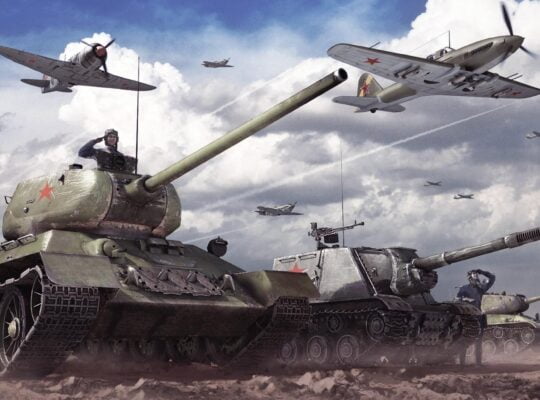In the vast digital landscape of the modern world, a remarkable phenomenon has taken the art and collectibles market by storm – the rise of Non-Fungible Tokens (NFTs). These unique digital arts and collectibles have revolutionized the way we perceive, value, and trade art and collectibles online. In this blog, we will delve into the captivating world of NFTs, shedding light on their significance, impact, and potential future.
Understanding NFTs: Uniqueness in the Digital Realm:
NFTs, or Non-Fungible Tokens, are digital tokens that represent ownership of a specific asset, often digital art, music, videos, virtual real estate, and more. What sets NFTs apart from traditional cryptocurrencies like Bitcoin or Ethereum is their non-fungibility, meaning each token is distinct and cannot be exchanged on a one-to-one basis. This uniqueness is achieved through blockchain technology, primarily built on the Ethereum platform.
The Emergence of NFTs and Digital Art:
The issue of provenance and ownership remained a challenge in the digital art world. This is where NFTs stepped in, providing a secure and verifiable way to claim ownership of digital masterpieces.
The NFT Boom: A Digital Collectibles Revolution:
This ownership grants them a sense of exclusivity and connection to the artist, elevating the digital art experience to new heights.
Empowering Digital Artists and Creators:
NFTs have transformed the lives of digital artists, empowering them to monetize their creations directly.
The Impact on Traditional Art and Collectibles Markets:
While NFTs have found their niche in the digital realm, their emergence has also influenced the traditional art and collectibles markets. Galleries and auction houses have started exploring NFTs as a new way to showcase and auction physical art pieces. This blend of the physical and digital worlds has created exciting opportunities and challenges for collectors, investors, and artists alike.
NFTs and the Environment: Addressing Concerns:
As the popularity of NFTs surged, so did concerns about their environmental impact. The energy-intensive process of minting NFTs on the Ethereum blockchain raised questions about sustainability. In response, some platforms have started exploring more eco-friendly alternatives like proof-of-stake blockchains. NFT enthusiasts and creators are actively seeking solutions to minimize the carbon footprint associated with this digital revolution.
NFTs and Virtual Real Estate: Redefining Ownership:
Beyond digital art, NFTs have extended their influence into virtual real estate. Metaverse projects have emerged, allowing users to buy, sell, and build upon virtual lands represented by NFTs. This convergence of technology and imagination opens up a whole new world of possibilities for virtual experiences, social interactions, and digital entrepreneurship.
NFTs and Gaming: A New Dimension of Ownership:
NFTs have not only revolutionized digital art and collectibles but also found a significant place in the gaming industry. In-game assets, virtual items, and even entire virtual worlds can now be represented as NFTs. Players can truly own their in-game possessions and transfer them between different games or platforms. This interoperability brings a new dimension of ownership to the gaming experience, fostering a sense of value and rarity among players.
Challenges in the NFT Space: Scams and Regulation:
As with any rapidly evolving technology, the NFT space is not immune to challenges. Scams and fraudulent activities have been reported, where fake NFTs were sold, or artists’ work was plagiarized and minted as NFTs without their consent. To protect creators and collectors, the community and platforms need to enforce robust verification and security measures.
Moreover, the absence of clear and comprehensive regulations in the NFT space has been a point of concern. As the industry gains prominence, regulatory frameworks will be necessary to safeguard the rights of all stakeholders, prevent money laundering, and ensure fair practices.
NFTs and Social Impact: Empowering Communities:
Beyond the world of art and collectibles, NFTs have shown potential in creating positive social impact. Some projects have leveraged NFTs to raise funds for charitable causes, environmental initiatives, and community-driven projects. The transparent nature of blockchain technology allows donors to track the flow of funds and ensures transparency in the utilization of resources.
Additionally, NFTs have enabled underrepresented and marginalized artists to gain recognition and financial support. Digital platforms have become inclusive spaces where artists from diverse backgrounds can showcase their talent and find a global audience, breaking down barriers that often exist in the traditional art world.
Education and NFTs: Transforming Learning:
The influence of NFTs has even permeated the education sector. NFTs can be used to create unique certificates or badges that signify a student’s achievements, skills, and competencies. These digital credentials are tamper-proof, easily verifiable, and can be shared across various platforms, redefining the way educational achievements are recognized and recorded. Additionally, artists and creators have started using NFTs to offer digital tutorials, courses, and workshops, creating alternative revenue streams and democratizing education in various creative fields.
NFTs and Cultural Preservation:
NFTs have also found a place in preserving cultural heritage and history. Museums and cultural institutions have started digitizing their collections and minting NFTs to represent historical artifacts, artwork, and other significant cultural items. This ensures that these treasures are not only accessible to a wider audience but also protected from theft or destruction.
Evolution of NFT Marketplaces:
With each marketplace offering unique features, users can find platforms that align with their preferences and values.
Future Trends and Speculations:
Others speculate that traditional financial assets, real estate, and luxury goods might be tokenized, unlocking new possibilities for investments and ownership.
The rise of NFTs has marked a defining moment in the history of digital art and collectibles. These unique tokens have democratized creativity, empowered artists, and revolutionized ownership in the digital realm. While the NFT space faces challenges and scrutiny, the potential it holds for the future is immense. From transforming the gaming industry to preserving cultural heritage, NFTs have permeated various aspects of our lives, leaving an indelible impact on the way we create, trade, and value digital assets.
Conclusion:
These unique tokens have empowered artists, revolutionized ownership, and disrupted traditional markets. While NFTs face challenges, the potential they hold for the future of digital creativity and ownership is unparalleled.









